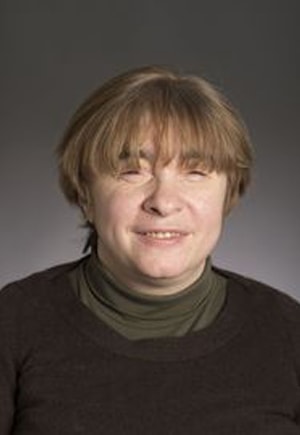Tina Kahniashvili Searches for Clues from Universe's First Moments
By Heidi Opdyke
Media Inquiries- Associate Dean for Marketing and Communication, MCS
- 412-268-9982
An instant after the Big Bang burst the universe into existence, violent processes generated strong gravitational radiation that rippled away from the explosion.
Those primordial gravitational waves could provide deep insights into the early universe, and Carnegie Mellon University's Tina Kahniashvili is at the forefront of an effort to understand more about its origin and evolution. A new grant from the NASA Astrophysics Theory Program (ATP) is helping to fund that effort.
"The work is high-risk but highly rewarding," said Kahniashvili, an associate research professor in the Department of Physics and a member of the McWilliams Center for Cosmology. "We are looking for messengers from the very early epochs and reconstructing the newborn universe picture."
Axel Brandenburg, an adjunct faculty member at Carnegie Mellon and professor of astrophysics at Nordita and the University of Stockholm, is co-principal investigator with Kahniashvili for the grant "Gravitational Waves as a Probe of the Early Universe." The grant includes additional collaboration with Andrew Long at Rice University; and Mark Hindmarsh, of Sussex University in the United Kingdom and the University of Helsinki in Finland.
Their goal is to provide the astrophysics and cosmology community with robust predictions for gravitational wave spectra from early universe sources, guidance for distinguishing different potential sources given the observational data and a clear understanding of how new physics can be probed with gravitational wave detection.
Kahniashvili and colleagues are looking for relics of this primordial gravitational radiation. The radiation relics are present in the form of stochastic gravitational wave backgrounds. In the 13.7 billion years since the relic gravitational waves were formed, they have stretched as the universe expanded. They now form something akin to an isotropic background that does not interact with any other components of the universe.
"Gravitational radiation propagates almost freely throughout cosmic history," Kahniashvili said. "Primordial gravitational waves reflect a precise picture of the universe at their time of production in the first fractions of a second after the Big Bang. Detecting these gravitational waves today would open the possibility to test physical processes at energy scales far beyond what is reached by particle physics experiments and astrophysical observations."
Gravitational wave missions such as pulsar timing arrays (PTAs) including the North American Nanohertz Observatory for Gravitational Waves (NANOGrav) are searching for this signal. The upcoming Laser Interferometer Space Antenna (LISA) will extend the search by several orders of magnitude in sensitivity.
In her work, Kahniashvili is taking the search a step beyond that.
"A primordial gravitational wave background that's detectable by PTA or LISA — most likely — cannot arise from the Standard Model of particle physics and cosmology alone, but rather it would be strong evidence for new physics," she said.
Kahniashvili earned her bachelor's in physics (and certificate in physics education) and master's degree in theoretical physics at Tbilisi State University in Georgia. She earned a Ph.D. in physics and a doctor of sciences degree from the Russian Academy of Sciences. She came to the United States in 2000 through a National Science Foundation (NSF) Collaboration and Basic Science and Engineering grant that supported visiting scientists from the former Union of Soviet Socialist Republics. At the time, she was working on early-universe gravitational waves and primordial magnetic fields.
She joined Carnegie Mellon in 2009. Since 2010, her work has been supported through grants such as the NASA ATP and the NSF Astronomy and Astrophysics Grant programs. She also has received funding through Swedish and Georgian grants and holds positions as a professor of physics and astronomy at Ilia State University and is the main scientist at Abastumani Astrophysical Observatory, both in Georgia.
"My current NASA ATP grant is my first grant that I got in the USA on gravitational waves from the early universe," she said. "I am really pleased that my proposal was selected."
